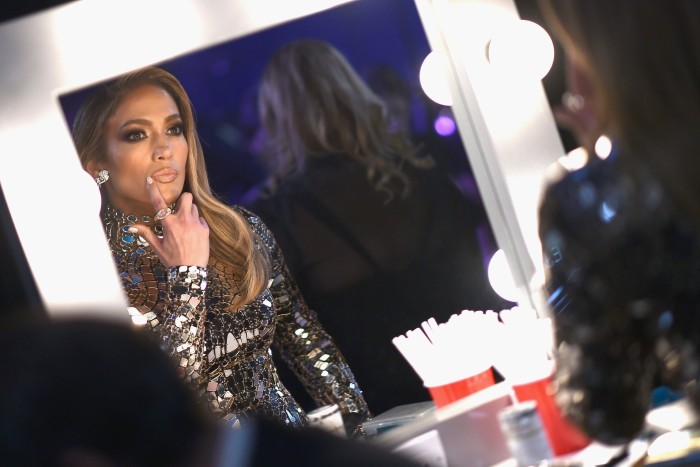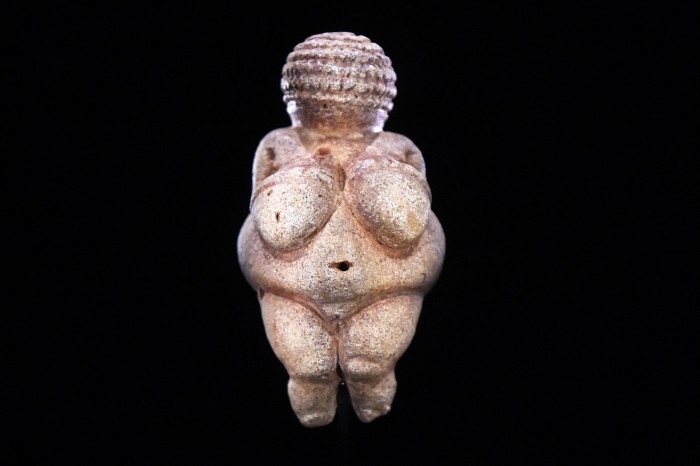Wrinkles, and why they terrify my generation

Simply sign up to the Life & Arts myFT Digest -- delivered directly to your inbox.
Sarah was my childhood neighbour. Our mothers were best friends. They were both whimsical and free, and beautiful, but rolled their eyes at the suggestion. Occasionally, as they aged, they’d pull their faces back slightly at the ears, or lift the loose skin that covered their eyelids. “I could use just a little bit of,” they would say, and tug, but they never did cut, or tuck, or fill. Now they are 74 and 86. They don’t exactly look young. But they are still, decisively — according to at least their daughters — gorgeous.
Our families became family, and Sarah became a nurse practitioner. After 20 years treating patients, at HIV clinics and Planned Parenthoods, she fell into something called medical aesthetics. Botox. Fillers. Lasers. Her job became the thing our mothers never did, and surely less virtuous. But for some reason, I admired it. I called her recently, because I’ve noticed my peers seem pathologically afraid of wrinkles, and finally asked her why she made the change.
“I never saw my career going this way,” she said. But she noticed that throughout her years in nursing, whether her patients were sex workers, drug users, menopausal housewives or pregnant teens, they cared most about how their treatment would affect their appearance. “I was working on getting their viral loads down, and they were worried about their skin,” she told me. “And I realised that women’s healthcare is inextricably entwined with how we look.”
I’ll tell you now what you already know: women have been idealised, and sexualised, for probably as long as we’ve existed. There’s a paleolithic figurine of a woman with massive breasts that dates back to 25,000BC, and we’ve almost certainly been worrying about wrinkles and saggy tits ever since. All of us, whatever our gender, reckon with ageing at some point. It’s a foundational fear. But something feels different now. It’s happening earlier.

The data shows it: according to the American Society of Plastic Surgeons, most plastic surgeons have reported an increase in demand since 2019, and 30 per cent have seen business double. Call it the Zoom effect, but since Covid, procedures have grown particularly fast in the face and neck: injections such as Botox have increased by 73 per cent, and cheek implants by 150 per cent. Eyelid surgeries are up. And this surge is driven by women under 45.
I’ve felt it, too. Our facial routines are more intricate, and start younger. Recently, I realised that my TikTok algorithm had taken a strong skincare turn, and my night-time routine had unintentionally morphed into a 20-minute performance that included serums, oils and a gua sha. (I dropped half of the products in horror, and my skin was fine.) Girls get preventative Botox as early as 13. Many of my own friends, I discovered, get subtle Botox too. It’s become an open secret, like abortions in the ’70s or diet pills in the ’90s.
I called a Beverly Hills plastic surgeon, Dr Jonathan Sykes, to ask why. I said I imagine women have always come to him because their faces have changed with age — deepening eye sockets, thinning fat pads, collagen loss — and they just want something small.
“Yeah, and that as an attitude is relatively healthy,” he said. “It suggests that they think they’re pretty, and want to look more like their concept of themselves. If that occurs at 55, it’s OK. But I find 30-year-olds are trying to push back time. At 30, you don’t want to look 15 or 17. You’ll just look funny.”
Sykes worries most when people want to look like someone else (“many people are asking for a cat eye”) or when they want to look young too early. And that’s happening way more. He said women come in trying to remove naturally occurring folds. Not wrinkles, but folds, in their skin.
“Nothing makes someone look more unnatural,” he said decisively, “than trying to look too young.”
My friends and I have brainstormed why we dread ageing more now. Before Instagram, our social worlds aged with us, but now we scroll through young faces all day. We FaceTime, selfie, swipe, filter and judge, ourselves the most. Sarah thinks that, because we live longer and optimise more for health, we feel younger than we look, for longer. Also, more models of young-looking older people exist. Jennifer Lopez is 54. She looks 30.
I asked Sykes if he had advice. He sighed. “Learn to be happy with yourself, and make minor changes, rather than think these changes will change your world,” he said. “These things almost never change people’s world.”
I ended my call with Sarah discussing our mothers. She said that often her young clients bring in photos of their mothers to illustrate how they don’t want to look. She insists that their mothers are beautiful. I told her I love my mother’s face. She has warm Armenian skin, and deep lines. They show a lifetime of laughing, and worrying about the world and her kids. I don’t want to look less like her, or run from my age, or hate my wrinkles. It’s sexy, when a face shows a life lived.
We laugh. Because it’s easy to say. If and when I lose my chin, I know a girl who runs a clinic.
Lilah Raptopoulos hosts the FT Weekend podcast. lilah.raptopoulos@ft.com
Follow @ftweekend on X to find out about our latest stories first
Comments